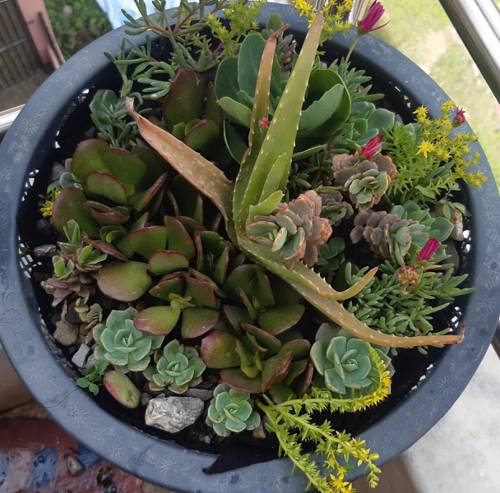
FAQ About Propagation of Rare Indoor Plant Varieties

What are some common methods for propagating rare indoor plants?
Common methods for propagating rare indoor plants include stem cuttings, leaf cuttings, division, air layering, and tissue culture. Each method has specific requirements and is suitable for different types of plants. It's crucial to choose the method that best matches the plant species you are propagating to increase the chances of success.

How can I propagate rare indoor plants using stem cuttings?
To propagate rare indoor plants using stem cuttings, first, select a healthy stem from the parent plant. Cut a section about 3-6 inches long, ensuring it has at least a few leaves. Remove the lower leaves and dip the cut end in rooting hormone to enhance root development. Plant the cutting in a well-draining potting mix and keep it moist until roots develop, usually in a few weeks.

What tools are essential for propagating indoor plants?
Essential tools for propagating indoor plants include a clean, sharp knife or pruning shears, rooting hormone, a spray bottle for misting, pots or trays for planting, and a well-draining potting medium. Additionally, you might need tools specific to propagation techniques like grafting tape for air layering or sterilization tools for tissue culture.

What is the role of rooting hormone in plant propagation?
Rooting hormone plays a crucial role in plant propagation by encouraging root growth in cuttings. It contains plant hormones that signal the cutting to develop roots more quickly and robustly. Although not always necessary, using rooting hormone can significantly increase the success rate of cuttings, especially for rare or difficult-to-root species.

How do I choose the right potting medium for propagating rare indoor plants?
Choosing the right potting medium involves considering factors such as drainage, aeration, and nutrient content that are appropriate for the plant species. A common mix for cuttings is equal parts peat moss and perlite or vermiculite. Some plants may require specific soil conditions, so it's important to research the needs of the particular species you are propagating.

Can you explain the air layering technique for propagating indoor plants?
Air layering is a method where a section of a plant's stem is encouraged to form roots while still attached to the parent plant. To perform air layering, make a small incision on the stem, dust it with rooting hormone, wrap it in damp sphagnum moss, and cover it with plastic wrap to retain moisture. Once roots have developed, the stem can be cut from the parent plant and potted independently.

What is tissue culture, and how is it used in propagating rare plants?
Tissue culture, or micropropagation, involves growing plant cells or tissues in sterile conditions on nutrient media. It's a more advanced technique often used for rare or endangered species because it can produce large numbers of plants from a small amount of starting material. This method requires specialized equipment and expertise but allows for the propagation of genetically uniform plants free from disease.

How long does it typically take for a cutting to develop roots?
The time it takes for a cutting to develop roots varies by plant species and environmental conditions. Generally, most cuttings will start to root in 1-6 weeks. Factors such as temperature, humidity, and light, as well as the use of rooting hormones, can influence rooting time.

What are some common mistakes to avoid when propagating rare indoor plants?
Common mistakes in propagating rare indoor plants include overwatering, using dull or unsterilized tools, not providing enough humidity, and choosing the wrong propagation method. It's crucial to research and understand the specific needs of the plant species, maintain sterilization to prevent disease, and monitor environmental conditions closely.

Can all parts of an indoor plant be used for propagation?
Not all parts of an indoor plant are suitable for propagation. Typically, only certain parts, such as stems, leaves, or roots, can be used depending on the plant species and propagation method. For example, succulents are often propagated from leaf cuttings, while others may require stem cuttings or division.

How can I ensure a high success rate when propagating rare plants?
To ensure a high success rate, it is important to start with healthy parent plants, use clean and sharp tools, apply rooting hormone where appropriate, provide the right environmental conditions such as light, humidity, and temperature, and choose the propagation method best suited for the specific plant species. Monitoring these factors closely will help increase the likelihood of successful propagation.

Why is humidity important in plant propagation?
Humidity is important in plant propagation because cuttings and new growth typically have higher water needs and fewer roots to absorb it. High humidity helps reduce water loss from transpiration and creates an optimal environment for root development. Using humidity domes or misting can greatly increase propagation success rates.

What are the best practices for propagating succulents indoors?
When propagating succulents indoors, use leaf or stem cuttings. Allow cuttings to callus for a few days to reduce rot risk, then place them on a well-draining soil mix. Water sparingly until roots develop, then gradually increase watering. Ensure they receive bright, indirect light and maintain warm temperatures.

What environmental conditions are ideal for plant propagation?
Ideal environmental conditions for plant propagation include warm temperatures (often between 65-75°F), indirect but bright light, and high humidity levels. These conditions help encourage root development and reduce stress on the plant cuttings or seedlings.

How can I propagate plants using the division method?
Propagation by division involves separating a mature plant into smaller sections, each with roots and shoots. This method is best performed on plants that naturally form clumps. Carefully remove the plant from its pot, gently separate the root ball into sections, and replant them in individual pots with fresh potting mix.

Is it possible to propagate rare indoor plants without using rooting hormone?
Yes, many rare indoor plants can be propagated without rooting hormone. Some species root readily on their own, making hormone use optional. However, rooting hormone can increase success rates and speed up root growth, especially for difficult-to-root species, making it a useful tool in propagation.

What are some signs of successful propagation in indoor plants?
Signs of successful propagation include the development of new roots, often visible through clear pots or by gently tugging on the cutting to feel resistance. New leaf growth and overall healthy appearance are also indicators that the cutting has rooted successfully and is beginning to grow independently.

Can rare indoor plants be propagated from seeds?
Yes, many rare indoor plants can be propagated from seeds, although this method can be challenging due to slow growth rates and specific germination requirements. Proper seed preparation, suitable growing conditions, and patience are key to success when using seeds for propagation.

What is the best time of year to propagate rare indoor plants?
The best time to propagate rare indoor plants is usually during their active growing season, which for most indoor plants is spring and early summer. During this time, plants are actively growing, increasing the likelihood of successful rooting and growth. However, this can vary depending on the specific plant species.

How can I ensure the health of my propagated plants?
To ensure the health of propagated plants, provide appropriate care such as proper lighting, watering, and temperature conditions. Regularly inspect for pests or diseases, and gradually acclimatize young plants to their permanent environment. Consistent monitoring and care during the early stages will help establish strong and healthy growth.
